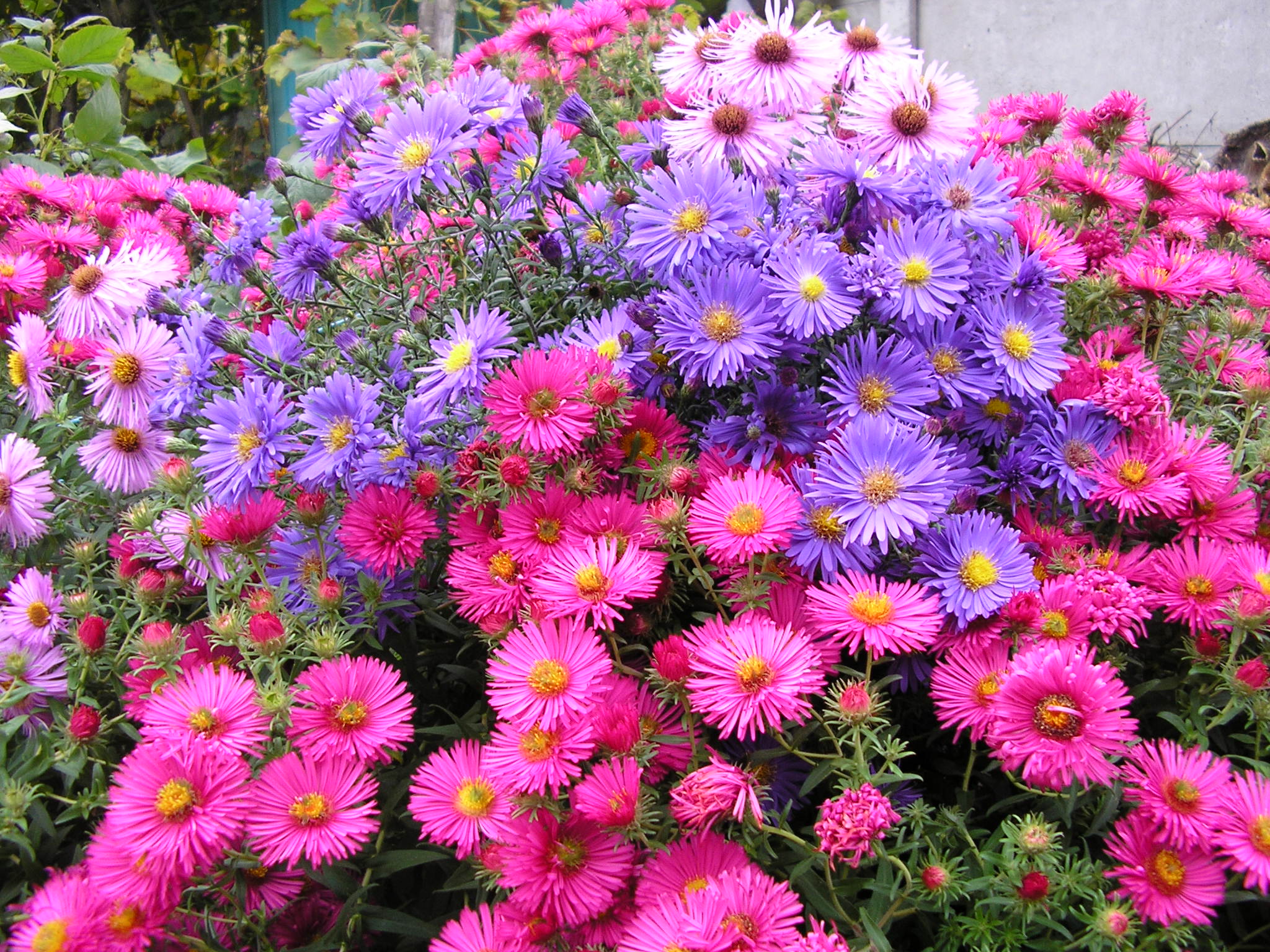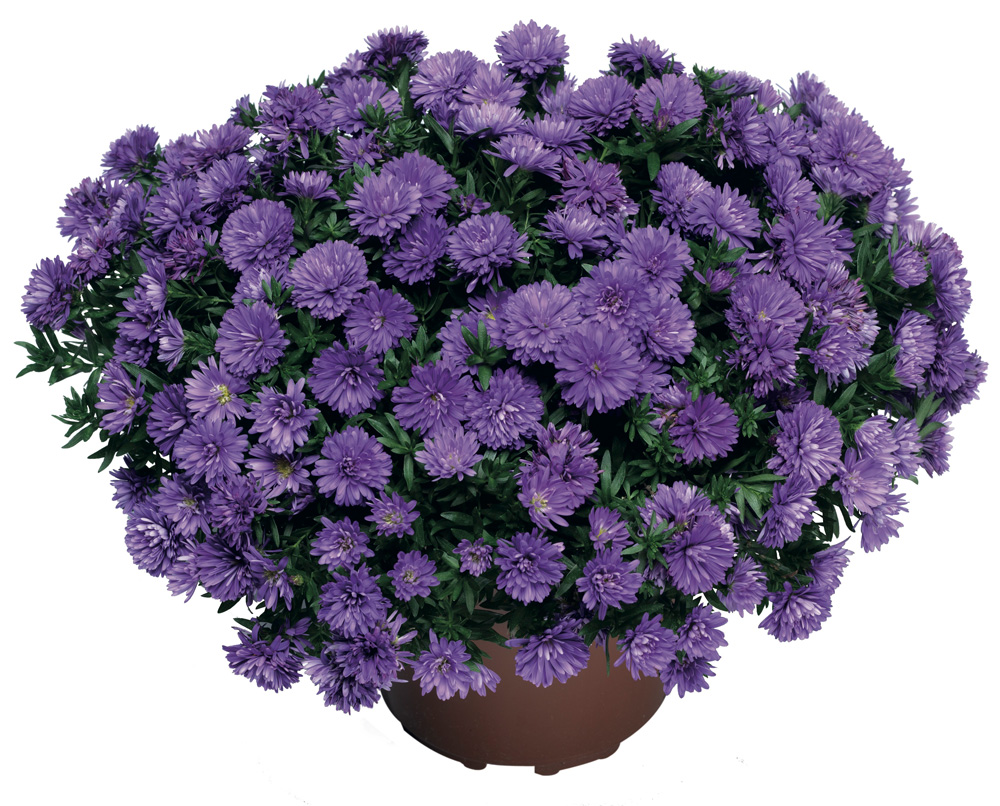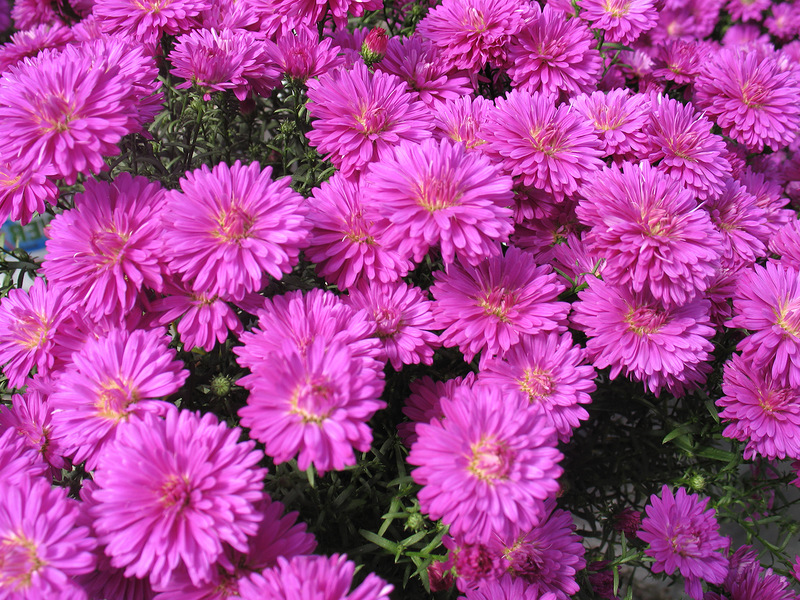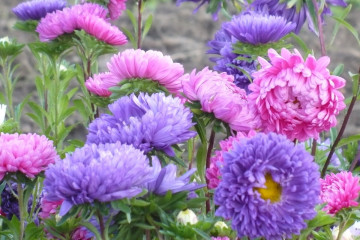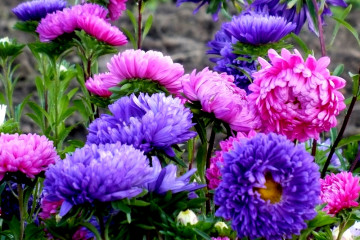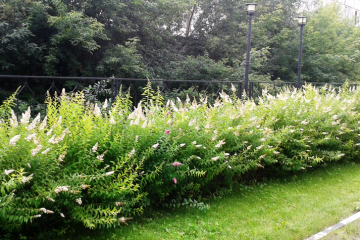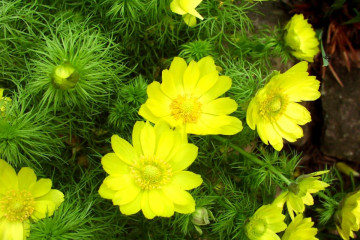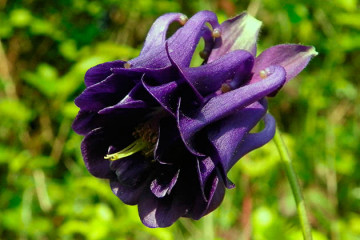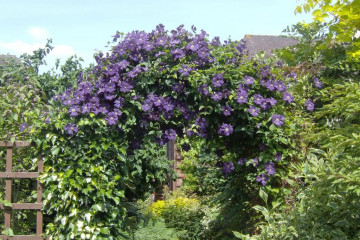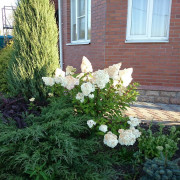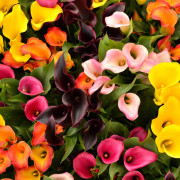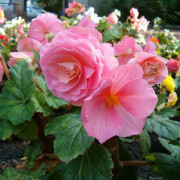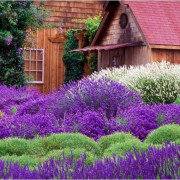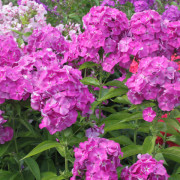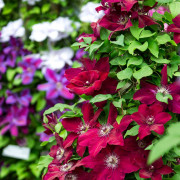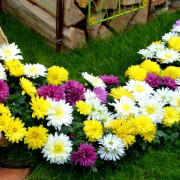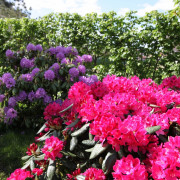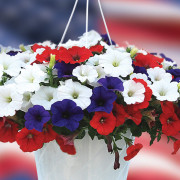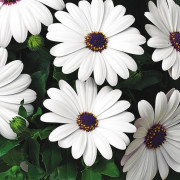Aster novi-belgii
Content:
- What does the New Belgian aster look like?
- Description of varieties bred on the basis of pure Aster novi-belgii
- Growing from seeds
- Planting in a seedless way
- How the perennial aster virginiana reproduces
- Features of home care
- When and how it blooms
- Transplant after purchase and during reproduction
- Possible growing problems
Sentyabrinka or Novobelgian aster is known to many gardeners. This unpretentious plant is used for border and group planting, parquet lawns and alpine slides. Bushes with small flowers look picturesque against the background of autumn gray.
What does the New Belgian aster look like?
There are many species of Aster Symphyotrichum Novi belgii, many of which are easily recognized by their numerous flower baskets that resemble stars.
Plant characteristics
Aster differs from its large-flowered relatives in winter hardiness. She winters well in temperate latitudes, where there are severe frosts.

Astrochka bloom late, at the very end of autumn, when the flower beds and beds are empty. Keep decorativeness for a long time
Short description:
- aster forms a dense bush with densely branched shoots, there are tall varieties above a meter in height and undersized, with shoots up to 30 cm;
- stems are erect, branching from ½ height;
- leaves are lanceolate, petiolate;
- inflorescences are formed in the form of a basket with a diameter of 2-3 cm, ligulate flowers are located at the edges, tubular in the center;
- the wrapper of the bud is dense;
- seeds are small, dark.
What family does it belong to
Astra Ballard or Virginia is a type of the family of Asteraceae herbaceous shrubs of the genus Aster.
Briefly about the history of appearance
In the wild, the plant is found on all continents. Presumably, the reproduction of the culture began in North America; Asia is mentioned in other sources. It is believed that the plant was brought to Europe by Catholic monks from France traveling in China. Flower breeding began in the 17th century. New species resistant to frost are still appearing.
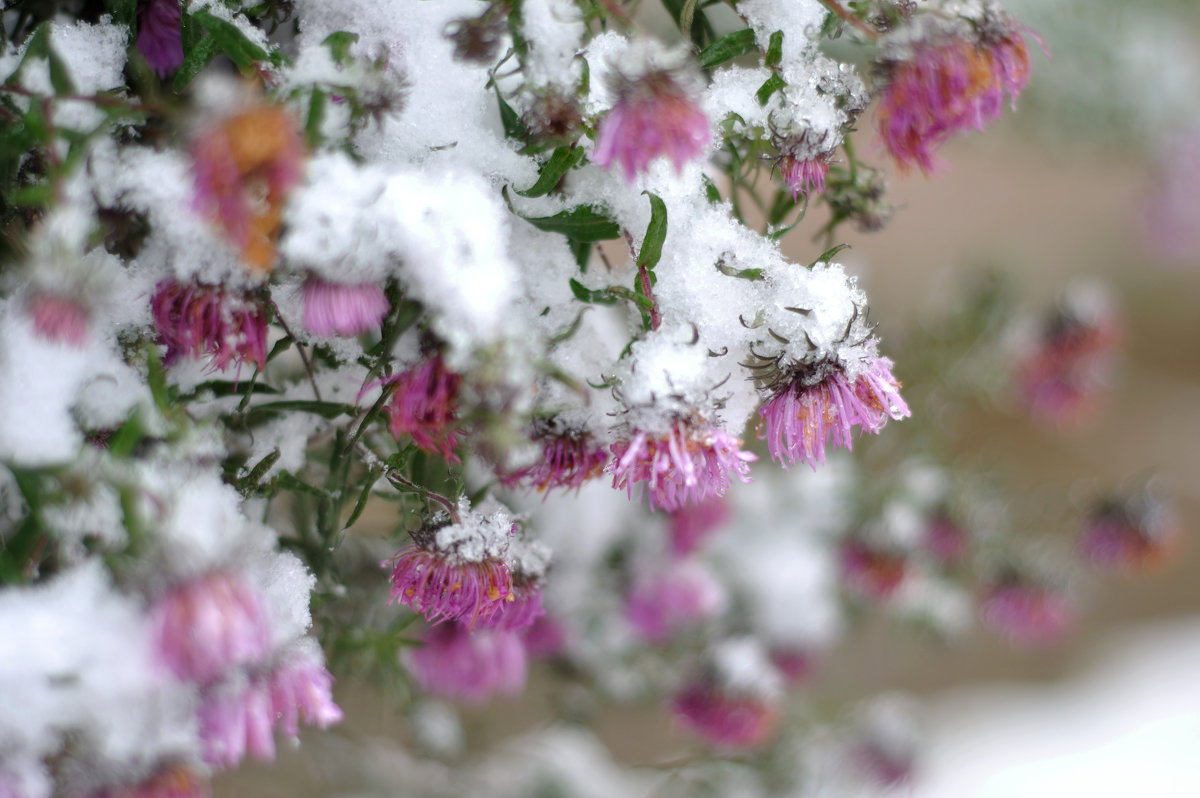
The buds tolerate frosts down to -5 ° С, they are not afraid of the right snow. Under the rays of the sun, the buds come to life, continue to bloom
Description of varieties bred on the basis of pure Aster novi-belgii
Belgian aster is extremely popular in Russia. The varieties that are distinguished by decorativeness deserve attention:
- Marie Ballard has been known since 1955, named after the daughter of the creator. It is a tall variety that forms a dense bush that does not require a garter. The shade of the buds is bluish-lilac, the core is yellow. The buds appear at the end of July, the bush blooms for 2 months;
- Mont Blanc is a late-flowering variety with white double inflorescences up to 4 cm in diameter. The stem height is 1.2–1.4 m;
- White Ladies is another white variety with chamomile-like flowers. Blooms in September, stem height up to 1 meter;
- Sam Benham is a relatively new white variety, shoot height up to 1.5 m. It blooms in September.
- Royal Ruby is a medium-sized shrub that grows up to 60–80 cm. Double flowers are bright crimson in color. The center of the bud is deep yellow;
- Amethyst is tall, late flowering, the diameter of the baskets is 3.5 cm.Dark purple buds do not fade in the sun;
- Sunset forms a spherical bush up to 60 cm high, flowers are small, 2.5 cm in diameter, lilac-pink hue;
- Royal Blue is a tall variety of asters with blue daisies, distinguished by the duration of flowering. If there is no severe frost, it blooms until mid-November.
Growing from seeds
Astra virginskaya of hybrid varieties comes to Russia as seeds. Bushes are grown in seedlings at home or in greenhouses.
Planting capacity and soil
Asters have a fibrous root system, the plant quickly adapts when small roots are damaged. Seeds can be sown and dived into common boxes. As a soil, a mixture of peat or compost soil with turf in a ratio of 1: 3 is recommended.
Seed preparation and sowing
The purchased seed material is subjected to stratification - kept in the refrigerator for at least 10-14 days. Before sowing, they are immersed in warm water for 2 hours. Seeds are laid out on moist compacted soil, sprinkled with loose soil with a layer of 1 cm. Seedlings appear in a week.
Timing
Sowing is carried out 2.5 months before the transfer of plants to open ground (March-April).
How to care for seedlings
For the full growth of seedlings, the soil is loosened after each watering. Nitrogen fertilization is carried out after 2 weeks of growth.
Landing in open ground
As soon as warm nights are established, the seedlings are transferred to the street. Leave in boxes for a couple of days, then planted in open ground, make shallow holes.
Planting in a seedless way
If the seeds are purchased in the fall, they are buried in the ground when the ground begins to cool. In the spring, seedlings will appear, they need to be looked after as at home. Plants will bloom in a year. For sowing, they choose a place protected from the cold wind, well warmed up, young shoots do not grow well in a draft. Only the strongest plants are left for reproduction.
How the perennial aster virginiana reproduces
Gardeners often practice vegetative and bush propagation.
Dividing the bush
Every seven years, Belgian asters are transplanted to a new place in order to preserve the splendor and decorativeness of the buds. The bush is divided with a knife, all suspicious roots are immediately removed. Shoots on daughter bushes are pruned, parts are immediately transferred to a new place or placed in a container with water.
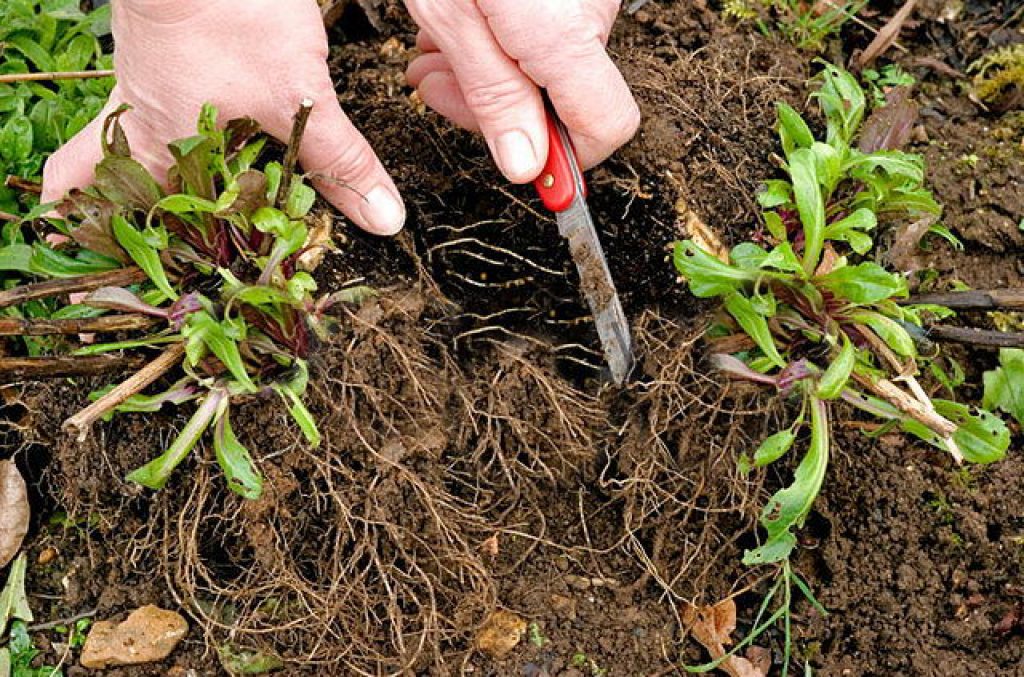
The bunch division procedure does not take much time. It is important to use clean inventory so as not to introduce fungal infection.
Cuttings
For border planting, plants are propagated by cuttings, cut from bushes, older than 5 years. Placed in water for rooting. After that, the cutting can be rooted in a new place.
Features of home care
Dwarf varieties of perennial Novobelgian asters are used for landscaping loggias, balconies, winter gardens.
Temperature
Since spring, the plant is grown as a regular indoor flower. For the flowering period, the plant is moved to a cool place, the buds will delight until November.
Lighting
Asters bloom poorly only on the northern side; they feel great on other window sills. In December, the pot is removed to a dark, cold place.
Watering
The bush is intensively moisturized during the growth period, in winter watering is reduced to a minimum.
Spraying
For abundant flowering, the plant is treated with the ovary preparation. More than 200 buds are formed on one bush.Spraying with water is recommended with the onset of the heating season, when the air becomes dry.
Humidity
The bush does not tolerate stagnant water, although it is very hygrophilous. The container must have a hole to drain excess water.
Priming
Aster grows well on loam, does not like too nutritious and loose soil. The soil for indoor flowers is mixed with turf, sand is added.
Top dressing
Homemade aster is fed twice a year: nitrogen after awakening, mineral complexes - at the beginning of budding.
When and how it blooms
Before planting an aster, you need to learn more about its flowering.
Types of flowers
Baskets are formed from three types of flowers:
- transitional (form a wrapper);
- tubular (located in the core, form testes);
- reed - these are petals along the edges of the core.
Flower shapes
Most often there are disc-shaped inflorescences resembling chamomile. Needle-like marginal petals are narrow, twisted. Terry are formed due to reed flowers.
Flowering period
In temperate latitudes, early flowering species bloom in late June. With medium flowering in August. Late - in September.
Transplant after purchase and during reproduction
The planting material is carefully examined, the tips of the roots are removed, the shoots are cut to 1/3 of the height.
Possible growing problems
Aster New Belgian, when planting and leaving in compliance with the rules of agricultural technology, is not susceptible to disease.
Leaf problems
Withering of the crown occurs with increased acidity of the soil, the disease is called fundamentalosis.
Pests
In contaminated areas, plants are affected by aphids, spider mites. When processing garden and horticultural crops, one should not forget about flowers.
Diseases
It is extremely rare for a bush to rot, this is possible only in flooded areas of the garden.
Signs of improper care
With an excess of nitrogen fertilizers, the number of buds decreases, with a lack of phosphorus, the buds become smaller.
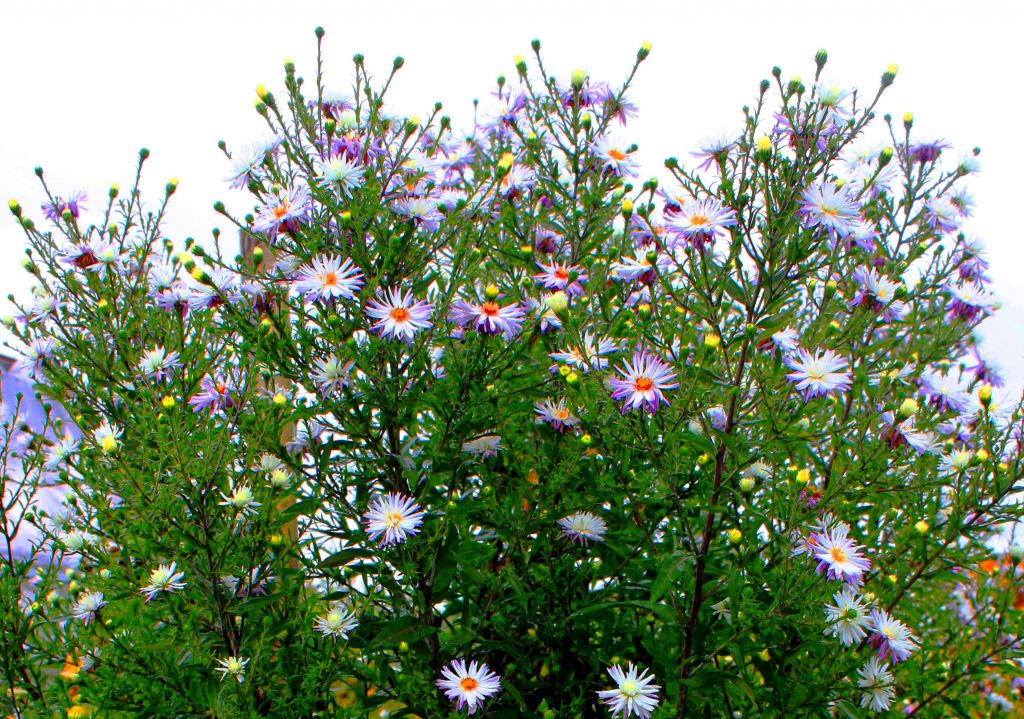
The bush is especially beautiful at the very beginning of flowering, when there are no testes and wilting petals
Bright flowers of the Belgian aster will color the autumn landscape. The stems covered with buds can be added to bouquets, the twigs will stand in the water for a long time. Dwarf species grow well in apartments, on glazed balconies and loggias.
